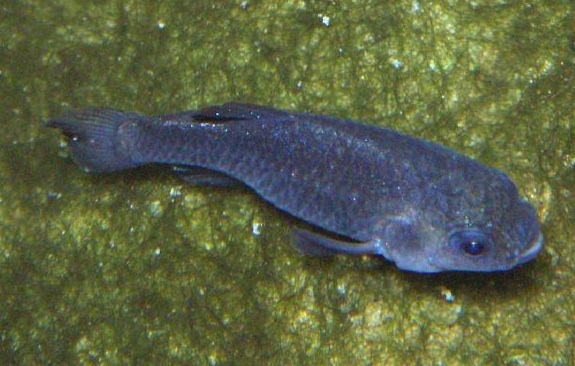We’re Just 35 Devil’s Hole Pupfish Away From the World’s Best-Documented Extinction
If the species does go extinct, it will join Florida’s Dusky seaside sparrow as an endangered species that has died out while under federal protection
Photo: US Fish and Wildlife Service
In Nevada, a six-foot wide opening in the desert rock leads into a sprawling expanse of aquatic underground caverns, 400 feet deep. The cave, thought to be formed 500,000 years ago and referred to today as the Devil’s Hole, is home to one of the world’s most endangered species of fish, the Devil’s Hole pupfish.
Only a handful of the iridescent, one-inch-long fish remain in Devil’s Hole, the only place that the species lives. The U.S. Fish and Wildlife Service explains the long battle to save the pupfish:
The Devils Hole pupfish (Cyprinodon diabolis) was listed as endangered in 1967.
Since population surveys began, Devils Hole pupfish numbers have not exceed 553 individuals. For reasons that are still unclear, the population of Devils Hole pupfish began to decline in the mid 1990’s. By the fall of 2006, an estimated 38 fish remained in the wild and two refuge populations were lost.
Now, according to new survey results, there are just 35 of the fish remaining. If these die, the Devil’s Hole pupfish’s demise will be one of the most meticulously and publicly documented cases of extinction. Even so, wildlife managers are stumped as to what is causing the decline. Review Journal reports:
Until this year, the lowest total on record was 38 in the spring of 2006 and 2007.
“So we’ve been here once before and bounced back,” Koch said.
That time, though, the reason for the crash was well-known. In 2004, scientists mistakenly left a container of fish traps next to Devil’s Hole, and a flash flood dumped the traps into the pool, inadvertently catching and killing roughly a quarter of the population. Not even the experts can explain what is happening to the pupfish now.
“It sounds very, very serious,” said Jim Deacon, a longtime local biologist and founder of the environmental studies program at the University of Nevada, Las Vegas. “I used to be alarmed if (the population) ever got below a hundred.”
Though the cavern where the pupfish live is sprawling, the sensitive fish seem to only lay their eggs on one small shelf of rock just below the surface of Devil’s Hole. Researchers wonder if those spawning beds may have been destroyed by some flood debris earlier last summer. The debris might have impacted the fish’s food supply, too.
If there were more fish left, Deacon would recommend moving some of them to another location with cooler water to see whether that promotes more successful spawning. But the population is far too small to chance that now, he said.
Past efforts to raise non-hybrid Devil’s Hole pupfish in captivity have failed, too. If the species does go extinct, Review Journal writes, it will join Florida’s Dusky seaside sparrow as an endangered species that has died out while under federal protection. The researchers also suspect that, if this does turn out to be the end for the pupfish, they’ll never discover what prompted this final, disastrous decline.
Here, you can learn more about the pupfish, courtesy of the U.S. Fish and Wildlife Service:
More from Smithsonian.com:
‘We the People’ Do a Better Job at Picking Endangered Species Than the Government
Black-Footed Ferrets and Other Endangered Critters
/https://tf-cmsv2-smithsonianmag-media.s3.amazonaws.com/accounts/headshot/Rachel-Nuwer-240.jpg)



/https://tf-cmsv2-smithsonianmag-media.s3.amazonaws.com/accounts/headshot/Rachel-Nuwer-240.jpg)